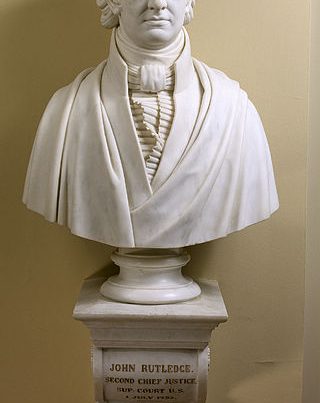In case you haven’t heard, there is a new “conservative” film out; it is titled “Death of a Nation: Can We Save America a Second Time?”
It’s director and screenwriter is Dinesh D’Souza, the somewhat pompous, word-measuring figure who occasionally shows up on Fox to talk in pious tones about “conservatism.” He is the movie producer who, by his own admission, has done as much as anyone to shape (in an almost ahistorical manner) perceptions about American history and the Founding Principles that have supposedly guided this country. And, in his latest cinematic adventure he stunningly compares the “triumph of America and its values” under that “great president and martyr” Abraham Lincoln to the crisis facing President Donald Trump. Like Lincoln, Trump is saving America “for a second time.”
Here is the film’s official blurb from D’Souza’s web site:
Not since 1860 have the Democrats so fanatically refused to accept the result of a free election. That year, their target was Lincoln. They smeared him. They went to war to defeat him. In the end, they assassinated him. Now the target of the Democrats is President Trump and his supporters. The Left calls them racists, white supremacists and fascists. These charges are used to justify driving Trump from office and discrediting the right “by any means necessary.” But which is the party of the slave plantation? Which is the party that invented white supremacy? Which is the party that praised fascist dictators and shaped their genocidal policies and was in turn praised by them? Moreover, which is the party of racism today? Is fascism now institutionally embodied on the right or on the left?
Thus, the president who refused all compromise (and torpedoed negotiations) with Southerners and Confederates (who were, as D-Souza assures us, no better than “racists” and “fascists”), the president responsible for the most egregious violations of habeas corpus and constitutional liberties in American history, the president who in effect unleashed a vicious conflict that took the lives of at least 620,000 Americans and maimed and handicapped for life hundreds of thousands more, the president who by military force radically altered the original American Constitution and set the stage for the growth of powerful and unchecked government, and the emergence of the managerial Deep State…that president is D’Souza’s model…and his analogy for Donald Trump.
And Lincoln, that noble opponent of “racism”? D’Souza omits Lincoln’s contradictory statements on American blacks and his repeated desire that blacks be sent back to Africa. And he conveniently fails to cite Lincoln’s declaration to New York Tribune editor Horace Greeley, August 22, 1862, scarcely three months prior to the formal issuance of the Emancipation Proclamation:
If I could save the Union without freeing any slave, I would do it, and if I could save it by freeing all the slaves, I would do it, and if I could save it by freeing some and leaving others alone, I would also do that. What I do about Slavery and the colored race, I do because I believe it helps to save this Union, and what I forbear, I forbear because I do not believe it would help to save the Union.
The one very significant fact that becomes clear in his latest cinematic screed is that D’Souza is ignorant of American history, and that he is an ideological and historical fabricator who seeks, in the name of defending his adopted nation, to bend and mishandle its history to fit a preconceived narrative which satisfies his Neoconservative task masters. For him history becomes a cudgel, a weaponized arm to further the Neoconservative agenda of “equality” and “liberal democracy,” both against the “farther Left,” but also, very significantly, against the traditional Right and traditional conservatism…and, as well, against Southern conservatives who would dare defend their heritage and traditions.
His narrative is essentially a leftist one, and like other Neoconservatives, he partakes of the basic philosophical views of the post-Communist Left, emphasizing politicized constructs of race and gender, and equality and democracy, projecting them back to incorporate all of American history. Thus, so it goes, echoing Marxist historians like Eric Foner: “the South had slavery, therefore it was a racist society. Racism had to be opposed at all costs and by all means. And that is what Lincoln did.”
The equation says too much, and leaves out too much. Four slave states did not leave the union, and Lincoln’s reasons for attacking the Southern states were far more economic and power-driven than not, with his later appeals to abolitionism seen by most observers then, as well as by many historians since, as desperate propaganda appeals to war-weary Northerners, to gin up the sagging war effort.
As noted economist Frank Taussig has detailed in his classic study, Tariff History of the United States (1967 edition), tariffs were the chief revenue source for the Federal government. The Morrill Tariff more than doubled American tariffs and greatly expanded the list of taxable items. Abraham Lincoln had campaigned vigorously on a platform of strong support for the Morrill Tariff. While the South would be paying nearly 80 % of the tariff, most of the revenues would be spent in the North. With the Southern states seceding, such a loss of revenue would be devastating to the Federal treasury and could not be allowed to stand.
There is another major critique that must be made: despite D’Souza’s claims, it was the Republican Party in 1860 that was, by every measure, the radical party, the party intent on destroying the original Constitution and transforming the union, not the more conservative (at that time) Democrats. D’Souza projects a political genealogy that simply will not stand up to serious historical investigation. The outbreak of war in 1861 did not come about due to Democrats who “went to war to defeat [Lincoln].” As historian William Marvel, in his Mr. Lincoln Goes to War (2006), relates, the conflict must be laid squarely at the door of the Lincoln administration: “It was Lincoln, however, who finally eschewed diplomacy and sparked a confrontation. He backed himself into a corner from which he could escape only by mobilizing a national army, and thereby fanning the flames of Fort Sumter into full-scale conflagration.” (p. xvii) Thus, it was the intransigence of the Lincoln administration that literally provoked war.
Even D’Souza’s supposedly hated Marxists recognized that Lincoln and his actions furthered their program and ideals. In 1864 Karl Marx sent Lincoln a famous “Address” from his “workkingman’s group,” in which he declared that “victory for the North would be a turning point for nineteenth-century politics, an affirmation of free labor, and a defeat for the most reactionary capitalists who depended on slavery and racial oppression,” that is, one more critical step in the projected Marxist historical dialectic. The American ambassador in London, Charles Francis Adams, responded and “thanked them for their support and expressed his conviction that the defeat of the rebellion would indeed be a victory for the cause of humanity everywhere.”
Like his supposed enemies over on the farther Left, Dinesh D’Souza employs the same faulty historical template, and, even if his arguments appear, at times, attractive or useful to conservatives, the end result is certain: you do not triumph historically or argumentatively using the same essential propositions, albeit less outrageous, as your opponent. Once you accept his grounds for debate, the battle—the war—is over.
No: stay away from this cinematic fraud…like tasty ice cream infected with poisonous venom, it might taste good at first, but the poison is sure to work its effect.







